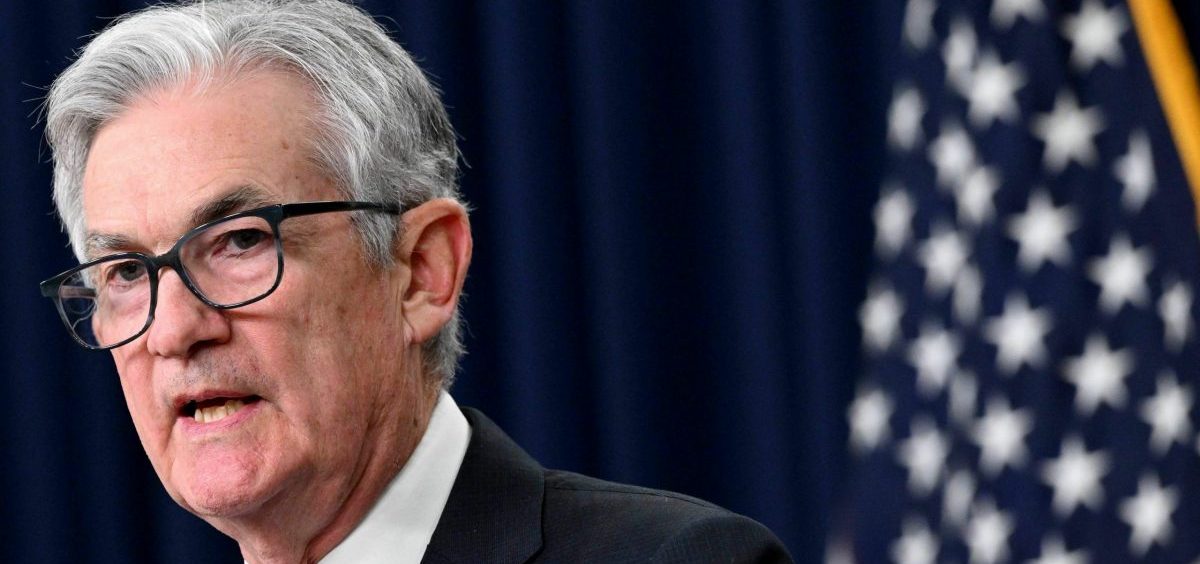News

The Fed raises interest rates by only a quarter-point after inflation drops
By: Scott Horsley | NPR
Posted on:
WASHINGTON (NPR) — The Federal Reserve raised interest rates by a quarter percentage point Wednesday, its eighth increase in less than a year as the central bank continues its crackdown on inflation.
The hike in the Fed benchmark rate is the smallest since last March, and signals that policymakers are shifting to a more cautious approach, after spending much of last year playing catch-up and boosting borrowing costs at the fastest pace in decades.
Higher interest rates have begun to have the desired effect. Consumer spending has cooled in recent months. And inflation had dropped significantly, although prices are still climbing faster than the central bank would like.
“We’re going to be cautious about declaring victory and sending signals that we think the game is won, because we’ve got a long way to go,” Fed chairman Jerome Powell told reporters.
While the price of some goods — like new and used cars — has started to fall, the Fed is concerned that the price of labor-intensive services may continue to climb. That would make it harder to get inflation back down to the central bank’s target of 2%.
“It’s the early stages of disinflation,” Powell said. “And it’s most welcome to be able to say that. But we just see that it has to spread through the economy and it’s going to take some time.”
Excluding volatile food and energy costs, “core” prices in December were 4.4% higher than a year ago, according to the Fed’s preferred inflation yardstick. That’s down from a 5.2% annual rate in September.
Wage gains have also eased in recent months, despite the tight job market. That helps to allay concerns that rapid wage gains might put more upward pressure on prices — as happened in the 1970s.
The Fed wants no surprises on inflation
The gradual decline in both prices and wages is exactly what the Fed has been trying to achieve.
“This is what the path for a soft landing looks like,” says Aaron Sojourner, an economist at the Upjohn Institute for Employment Research. “Inflation has come down but there’s not a recession.”
Markets don’t see eye to eye with the Fed on interest rates
On average, Fed policymakers said in December they expect their benchmark interest rate to climb to 5.1% — from 4.625% now — and remain there at least through the end of the year.
Financial markets are skeptical of that forecast. Many investors are betting that the central bank will soon start cutting interest rates, despite repeated warnings to the contrary from Fed officials. The expectation of lower borrowing costs is one reason the stock and bond markets have rallied in recent weeks. The S&P 500 index rose 1% on Wednesday while the Nasdaq jumped 2%.
“The market has a very optimistic view that inflation is just going to melt away,” Fed governor Chris Waller said. “We have a different view, that inflation is not just going to miraculously melt away. It’s going to be a slower, harder slog to get inflation down. And therefore we have to keep rates higher for longer.”
Will the Fed overdo the fight against inflation?
Two years ago, Fed policymakers believed that inflation would come down on its own, once pandemic supply problems were resolved. Instead, price hikes proved both larger and longer-lasting than the central bank expected.
Now, some analysts worry the Fed is in danger of making the opposite mistake, pushing interest rates higher and slowing the economy more than necessary to bring prices under control.
“We’re pulling off something really nice right now,” says Sojourner, who served as a senior economist for the Council of Economic Advisers in both the Obama and Trump administrations. “If the we get to the place where the Fed over-corrects, then we start to see jobs destroyed. Hopefully we can avoid that.”
Powell argued that it’s better to push interest rates too high than to stop short and allow inflation to come roaring back.
“It’s very difficult to manage the risk of doing too little, and finding out in six or twelve months that we actually were close but didn’t get the job done,” he said.

Fed warns about dangers of not lifting debt ceiling
The Fed chairman ordinarily tries to steer clear of partisan battles in Washington, but Powell minced no words about a looming deadline to raise the federal debt ceiling.
Unless Congress authorizes an increase in the debt limit by summer, the government won’t be able to pay all of its bills, triggering a potentially disastrous default. House Republicans hope to use that threat as a bargaining chip to extract big spending cuts.
Powell said that’s a dangerous gamble, and warned no one should expect the central bank to come to the rescue.
“There’s only one way forward here, and that is for Congress to raise the debt ceiling so that the United States government can pay all of its obligations when due,” Powell said. “Any deviations from that path would be highly risky. And no one should assume that the Fed can protect the economy from the consequences of failing to act in a timely manner.”
Meanwhile, in a statement, the Fed’s rate-setting committee said it would continue to monitor a wide range of variables as it tries to assess the strength of the economy, but a long-standing reference to public health was conspicuously dropped.
Powell, who tested positive for COVID-19 last month, said that’s a sign that people and businesses have increasingly adapted to living with the pandemic.
“I personally understand well that COVID is still out there,” Powell said. “But that it’s no longer playing an important role in our economy.”
9(MDU1ODUxOTA3MDE2MDQwNjY2NjEyM2Q3ZA000))
Transcript :
ARI SHAPIRO, HOST:
That battle with inflation is not yet over, but we may be getting closer to a cease-fire. The Federal Reserve raised interest rates again today as it tries to clamp down on high prices. But this was the Fed’s smallest rate hike in almost a year. The central bank is adopting a more cautious approach as it tries to weigh the effect that higher borrowing costs are having on the economy. NPR’s Scott Horsley is here in the studio. Hey, Scott.
SCOTT HORSLEY, BYLINE: Hi, Ari.
SHAPIRO: So today’s move was a major downshift for the Fed. What’s going on?
HORSLEY: The central bank spent most of last year playing catch-up with inflation, which hit a 40-year high last summer. The Fed had to raise interest rates at the fastest pace in decades. Now those rate hikes are starting to have the desired effect. You know, people are spending a little bit less. Inflation has started to cool off. So the Fed thinks it’s time for some fine-tuning. Today’s rate hike was only a quarter of a percentage point, much smaller than most of last year’s increases. Even though we’re seeing lower inflation, though, or disinflation, Fed Chairman Jerome Powell says we’re not out of the woods yet.
JEROME POWELL: We’re going to be cautious about declaring victory and, you know, sending signals that we think that the game is won because it – you know, it’s – we’ve got a long way to go. It’s just – it’s the early stages of disinflation. And it’s most welcome to be able to say that, but we just see that it has to spread through the economy and that it’s going to take some time.
HORSLEY: Powell thinks the central bank will push interest rates a little bit higher, maybe two more quarter-point rate hikes. And he says rates are likely to stay up for the rest of this year, although that could change if circumstances dictate.
SHAPIRO: What does that mean for ordinary Americans and for the economy more broadly?
HORSLEY: Well, higher rates are certainly weighing on the housing market. They also make it more expensive to get a car loan or carry a balance on your credit card. People are getting a little more cautious about their spending. What’s encouraging is so far, we haven’t seen much fallout in the job market. Despite some of those high-profile layoffs in the tech sector, unemployment’s still really low, just 3 1/2%. Now, some critics do worry that if the Fed goes too far with these interest rate hikes, we could see a jump in unemployment. But Powell insists it’s better to push rates too high than to stop short and then see inflation come roaring back.
POWELL: It’s very difficult to manage the risk of doing too little and finding out in six or 12 months that we actually were close but didn’t get the job done.
HORSLEY: Powell and other officials have been saying that for months. But, you know, financial markets are not convinced. In fact, a lot of investors think the central bank’s going to end up cutting interest rates before the end of this year. After some hesitation today, the stock market rallied. The S&P 500 closed up 1%. The Nasdaq jumped 2%.
SHAPIRO: Powell usually tries to steer clear of political fights, but he was asked today about the fight over the debt ceiling. What did he say about that?
HORSLEY: Yeah, the federal government’s bumping up against its debt limit. And unless Congress authorizes an increase sometime this summer, the government won’t be able to pay all of its bills. House Republicans hope to use that as a bargaining chip to extract spending cuts. Powell says that’s a risky proposition. And he warned if the government flirts with a default, no one should expect the central bank to come to the rescue.
(SOUNDBITE OF ARCHIVED RECORDING)
POWELL: There’s only one way forward here, and that is for Congress to raise the debt ceiling so that the United States government can pay all of its obligations when due. And any deviations from that path would be highly risky – and that no one should assume that the Fed can protect the economy from the consequences of failing to act in a timely manner.
HORSLEY: This is kind of a recurring nightmare for Powell, who had to make a similar argument to House Republicans back in 2011, the last time there was a big showdown over the debt ceiling. Back then, Powell was a scholar at the Bipartisan Policy Center, and then-President Obama was so impressed by his performance, he put Powell on the Federal Reserve Board.
SHAPIRO: NPR’s Scott Horsley, thank you.
HORSLEY: You’re welcome. Transcript provided by NPR, Copyright NPR.

